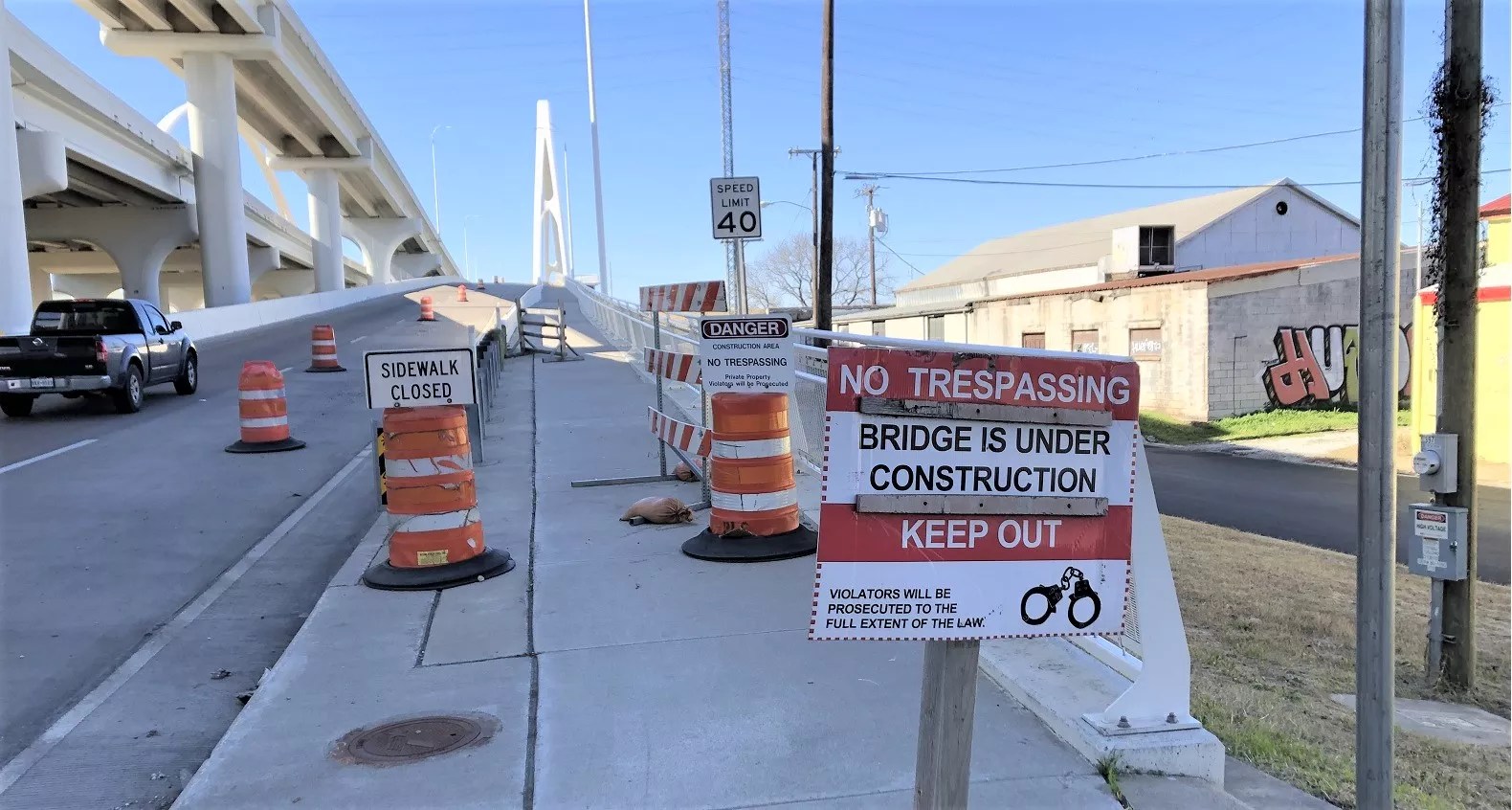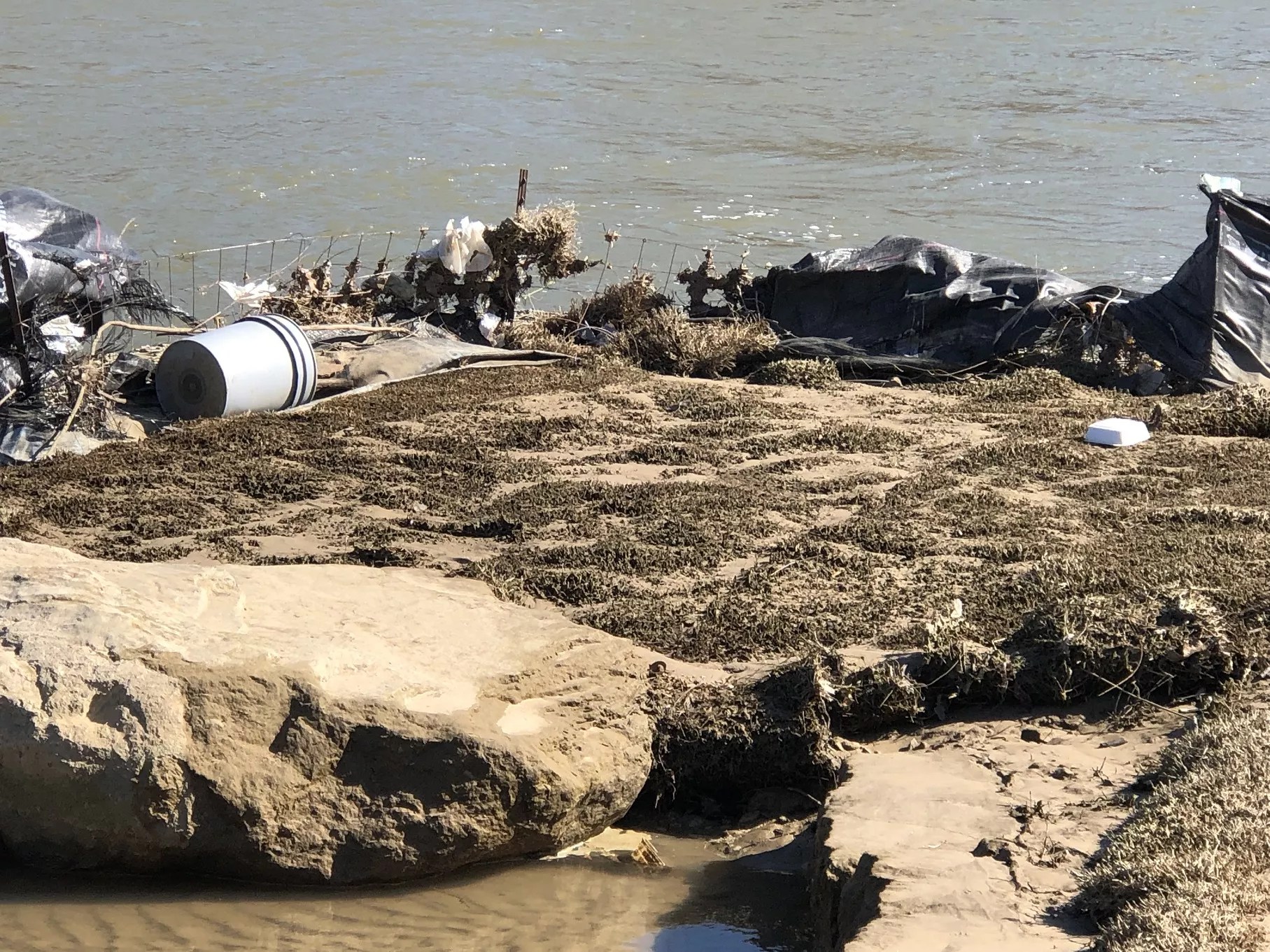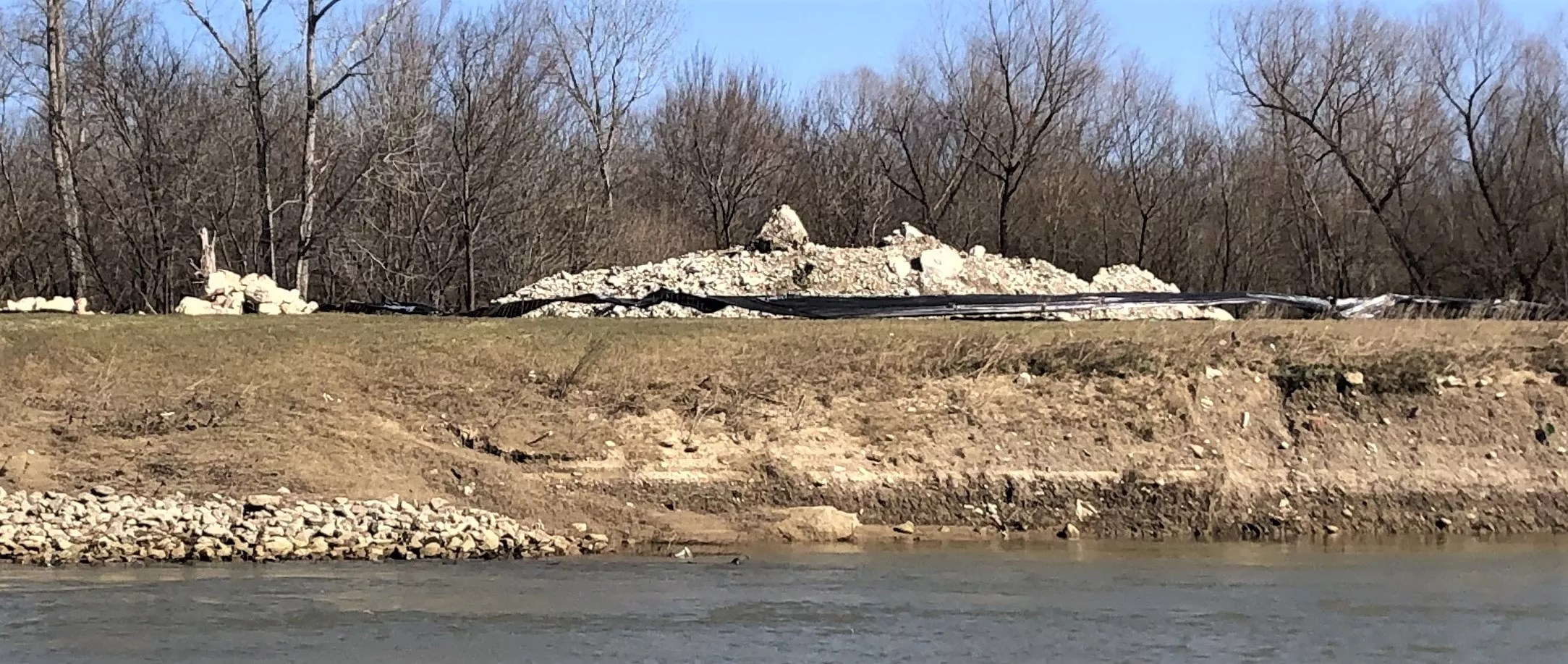
Jim Schutze

Audio By Carbonatix
Wednesday I decided to go out and check on my two favorite issues in the upcoming mayor’s race. Yup, still there: 1) The trashy mess where the city finally tore out the $6 million never-used fake whitewater feature it built in the Trinity River, and 2) the $115 million never-used Margaret McDermott bicycle bridge on which you will be arrested for setting foot.
Really? That’s all you need to know.
The issues with leadership at Dallas City Hall are way bigger and way worse than a fake kayaking rapid and an insanely expensive, failed bicycle bridge. But those two things tell the story.
This year, make your gift count –
Invest in local news that matters.
Our work is funded by readers like you who make voluntary gifts because they value our work and want to see it continue. Make a contribution today to help us reach our $30,000 goal!
Never mind that the freeway bridges didn’t need arches. They were big, fat, stubby, concrete freeway bridges – the kind the state builds all over Texas. They stand up by themselves. That’s sort of the point.
If you want to take in the big picture, you need to zoom out to include a 20-year, deeply idiotic attempt to build an unneeded expressway out in the middle of the Trinity River floodway, where, by the way, it floods. Maybe someday historian bean counters will tote up the tax money we wasted on that circus – at least in the hundreds of millions of dollars. For now, all we have to do is cast an eye around the rest of the city and see what didn’t get done.
All the developing nations’ streets and crumbling infrastructure we see, the absence of smart-city technology like coordinated streetlights, the measly efforts to provide decent affordable workforce housing: we can’t know that every penny squandered on the un-built Trinity toll road was embezzled out of the things the city should have been spending our tax money on. But look at it this way. All the things left undone in Dallas amount to one great big hole in the pocket. And sitting out there between the levees is a great big muddy hole that got buckets of money poured into it. So let’s just guess-timate.
The McDermott bicycle bridge next to the I-30 freeway bridge over the Trinity River is a bitter symbol of it all. When I went out there yesterday I noticed the city had swapped out its old trespassing signs for some new, tougher ones. The new signs have handcuffs painted on them. That’s what will happen to you, the sign says, if you try to walk out there.
Nice.
I have been writing about it for years.The state built new highway bridges, one eastbound and one west, to carry I-30 across the river at a cost of $120 million. Those bridges opened seven years ago without a hitch.
The people who have long dominated Dallas City Hall — whom I would characterize as the Park Cities, Preston Hollow, Citizens Council, Dallas Country Club, Charity Ball set – talked the city into devoting an additional $115 million to twin bicycle bridges, one on each side of the freeway. It’s important to know why.
Nobody wants to ride a bike down there. The bike bridges go from pawn shops on the east bank of the river to a sea of mud at their western extremity. And anyway, if people did want to ride bikes across the river at that point, they would only need a bicycle bridge on one side, not one in each direction. If there were a real danger of people conking into each other, they could put those little red squeeze-ball honk-honks on their handlebars and save the public $57.5 million right there. That’s a whole lot of honk-honks.

On the site where the city squandered million in a fake kayak rapids that eventually had to be torn out: They left behind a little trash heap as a token of their regard.
Jim Schutze
The $115 million bicycle bridges weren’t built for bicycles. They were built for decoration. The social set who pushed for the McDermott bicycle bridges to be built wanted an excuse to hire famous Spanish architect Santiago Calatrava to design immense arches framing the freeway bridges.
Never mind that the freeway bridges didn’t need arches. They were big, fat, stubby, concrete freeway bridges – the kind the state builds all over Texas. They stand up by themselves. That’s sort of the point.
Three years is stupid. It took one year to build the whole thing. If there were a viable way to fix it, the city would have been done with the job in a matter of months. Saying it will take three years is a political stall.
But Calatrava some years before had already designed an even more expensive decorative bridge just upriver, between the Design District and West Dallas. It was named for a family. So the thinking on the McDermott was that the huge arches would make the whole mess look like one big, dramatic cable-stayed bridge designed by a famous architect, and it could be named for a family, too.
So why, seven years after the freeway bridges opened, are the bicycle bridges still closed to traffic on pain of handcuffs? They are closed because no one – not the city, not Calatrava, not the state – can persuade the supervising engineer to certify them as safe. And safe, in the bridge world, means they won’t fall down.
Ken Kalthoff at NBC5 stole a march on me recently with a story he got from the Texas Department of Transportation saying it could be another three years before the twin bicycle bridges can be opened. The cost of making them safe could be $10 million, and no one has agreed to pay.
Let me translate that for you from bureaucratic avoidance-speak to English. The bike bridges are never going to open. The city will have to tear down the arches and the bicycle lanes at God knows what cost. But nobody wants to talk about it until after everybody has retired.
Three years is stupid. It took one year to build the whole thing. If there were a viable way to fix it, the city would have been done with the job in a matter of months. Saying it will take three years is a political stall.
Ostensibly the problem is that they can’t get the thing to stop jerking round like Galloping Gertie in high winds, because the cable mechanisms holding up the bike lanes are too light. So, get heavier cable mechanisms, right? That idea came up a year ago, but it seems to be off the table now. Whatever is wrong, it’s worse than weak cables.

Across the river and a little hard to reach, that big dump of concrete rubble, we assume, is the bones of the fake whitewater feature. Don’t ever let the city catch you dumping something like that out there.
Jim Schutze
The problem is even deeper than the basic design. The problem is the basic concept – a vanity suspension bridge, an immense public works project built so people can show off. Somewhere in the line of development from silly-ass pretension to final engineering, a serious cuckoo got into that nest. Now they can’t beat it out of there with a baseball bat.
And just in case you think I’m piling on with one bad project, let’s dip back downriver a bit and look at the fake whitewater feature again – a big, ugly concrete slab chunked into the river at a cost to the city of $4 million, also never opened to traffic because it was unsafe from day one.
After years of stalling, the city finally had to tear it out last year under orders from the U.S. Army Corps of Engineers, which had threatened at one point to cut off the city’s water supply if it didn’t do something.
That thing was built because the socialite families had seen a kayak park somewhere on vacation in Colorado and thought it would be cool to have one here, too. Of course, they didn’t want to pay for it. That was up to the city. And they knew nothing about rivers, probably also nothing about kayaks. Tearing it out last year cost the city another $2 million.
I know what the comeback will be from the Park Cities set. I have heard it a time or two. They are going to say I am bitter and jealous because I’m not rich or beautiful. They’re half right. I’m not rich.
But I still want to add something to that. I have known a lot of rich people who are really smart, some of them right here in Dallas. In fact, I’m always wondering where in the hell they are? Hiding?
The problem here is not rich people. It’s a particular breed of rich people who for some reason have attached themselves like lamprey eels to the hide of City Hall and think it is their right to suck out whatever resources they need for their endless idiotic follies.
Robert Wilonksy had a great piece in The Dallas Morning News Wednesday about restaurateur and culture leader Shannon Wynne, who has committed to creating decent affordable housing in the city. My late in-laws lived in the still beautiful neighborhood that Wynne’s father, Angus, built in Oak Cliff in the 1950s. The Wynnes are a great example of smart, civic-minded rich people. People like that are not the problem.
The problem is that City Hall has been dominated for decades by people who are not civic-minded, who seem not even to like the city much unless they can get something out of it. And people like that just seem to have very stupid ideas for how the city should spend its money.
There’s always another question that bothers me in this picture. We live in a democracy. You’d have to search far and wide to find a place on earth where the individual citizen has more ability than we do to shape the world around her. All you have to do is vote.
I don’t know why we came to this pass. But I go back out there to the fake whitewater feature and the unopened bicycle bridge every once in a while just to remind myself. We really and truly do need a whole new breed of leadership in this town.